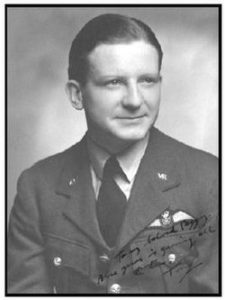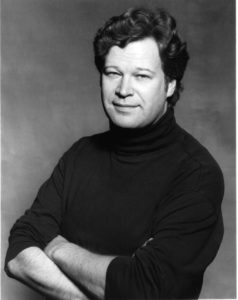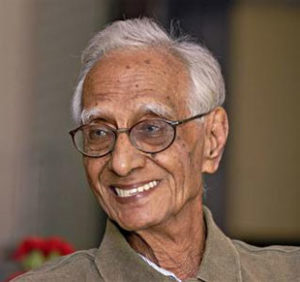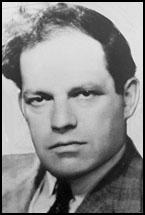We have decided to create the most comprehensive English Summary that will help students with learning and understanding.
My Mother At Sixty Six Summary in English by Kamala Das
My Mother At Sixty Six Poem by Kamala Das About the Poet
Kamala Das was bom on March 31,1934 in Punnayurkulam, Thrissur District in Kerala. She was one of f the India’s original and versatile writers. She spent her childhood between Calcutta, where her father : was employed and at the ancestral home in Punnayurkulam. The writings of her great uncle, Nalapat Narayana Menon and mother Nalapat Balamani Amma had a great impact on her.
She took to writing at an early age and continued even after marriage as she was encouraged by her husband to write. Her ? writings reflect exploration of a wide range of relationships from a woman’s point of view—a daughter, a wife and a mother. Her works are filled with a woman’s desire for self-expression and freedom.
| Poet Name | Kamala Das |
| Born | 31 March 1934, Punnayurkulam |
| Died | 31 May 2009, Pune |
| Spouse | Madhava Das (m. 1949–1992) |
| Awards | Vayalar Award, Muttathu Varkey Award, Kerala Sahitya Akademi Award for Story, Kerala State Film Award for Best Story |
| Movies | Neermaathalathinte Pookkal, Mazha, House of Stories, Raama Raavanan, Ormayilenthum |
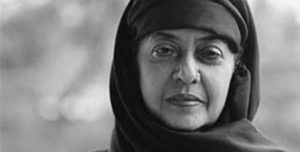
My Mother At Sixty Six Introduction to the Poem
Though ageing is a natural process, yet the fear of separation from your loved and near ones is very painful. The poem talks about the feeling of loneliness that aged people experience and the feeling of guilt which their offspring experience for not being able to be with their parents in their old age. The poem also explores the feelings of melancholy and pain that a daughter experiences while leaving her mother, all by herself, at a ripe old age. The agony of separation is brought forward in this poem very explicitly. The poem, in a way, also sends a very strong message to the youth of today—do not be so busy in fulfilling your desires and wishes that you forget to take care of your elderly parents when they need you the most. At times, situation can be binding. But one should never forget to show one’s love, affection and concern for one’s parents.
My Mother At Sixty Six Theme
Fear of loss: The poem composed in blank verse expresses the anguish of a daughter over her mother’s advancing age and the fear of permanent separation from her. ‘My Mother at Sixty-six’ symbolises the fast paced life and the inevitable death of our childhood, youth and loved ones. The poet is agonised by her mother’s advancing age and fear of her imminent death.
Nostalgia: The poet is carried away by her childhood premonition of losing her mother.
My Mother At Sixty Six Summary in English
While driving from her parent’s home to Cochin, International Airport, Kamala Das notices her mother, who was sitting beside her, dozing with her mouth open. Her mother’s face was pale like a dead body. The expression on her face was clearly one of pain, borne out of fear of separation and old age. A sudden fear and pain crops up in the poet’s mind and she realises that her mother is old now and could pass away leaving her all alone. Though the realisation was alarming, it was hard to accept.
In order to drive her thoughts away from the agony and pain on looking at her mother’s colourless pale face, Kamala looks outside the car. The trees racing past and the speeding car were grim reminders that time has flown by. The joyous children playing outside represent youth, energy and life. All this probably reminded of her childhood when her mother was young.
After the security check at the airport, Kamala Das looks back at her mother standing a few yards away looking pale and grey like the winter moon. The poet senses a familiar pain and her childhood fear of the thought of losing her mother comes back. Overcome with sorrow and fear, she bids her old mother goodbye and keeps smiling to hide her real feelings.
My Mother At Sixty Six Summary Reference-to-Context Questions
Read the extracts given below and answer the questions that follow.
1. Driving from my parent’s home to
Cochin last Friday morning,
I saw my mother, beside me,
doze, open mouthed, her face ashen like that
of a corpse and realised with pain
that she was as old as she looked but soon
put that thought away, and looked out at Young
Trees sprinting, the merry children spilling
out of their homes,
a. Name the poem and the poet.
Answer:
The poem is ‘My Mother at Sixty-six’ and the poet is ‘Kamala Das’.
b. Where was the poet going to and with whom?
Answer:
The poet was going from her parent’s home to the Cochin airport. She was accompanied by her mother who was sixty-six years old.
c. What did the daughter notice inside the car?
Answer:
She noticed her mother looking pale and dull, and as lifeless as a dead body. She was dozing and her mouth was open.
d. In what state is the mother now?
Answer:
She is dozing open mouthed and with a pale face.
2. but after the airport’s
security check, standing a few yards
away, I looked again at her, wan, pale
as a late winter’s moon and felt that old
familiar ache, my childhood’s fear,
but all I said was see you soon, Amma,
all I did was smile and smile and smile
a. Why does the poet ‘look at her again’?
Answer:
The poet looks at her mother for the last time before boarding the flight. She reassures herself about the well-being of her mother. She wished her mother goodbye in order to comfort her and leave on an optimistic note.
b. Does the poet share her thoughts with her mother?
Answer:
No, the poet does not share her fears and agony with her mother, but only bids her a cheerful farewell.
c. Why did the poet not share her thoughts with her mother?
Answer:
The poet did not share her thoughts with her aged mother because it would have unnecessarily disturbed her frail old mother. Moreover, her thoughts were caused by her fear of the unknown.
d. Give one reason for the poet’s ‘smile’.
Answer:
She wanted to assure her mother that they would meet again.
3. … she
looked but soon
put that thought away, and
looked out at young
Trees sprinting, the merry children spilling
out of their homes,…
a. What did the poet realise? How did she feel?
Answer:
The poet was on her way to the airport when she realised that her mother was nearing her old age, and this feeling was hard for her to accept.
b. What did she do then?
Answer:
She tried to divert her thoughts by looking out of the car window.
c. What did she notice in the world outside?
Answer:
She noticed that some joyous children were playing outside which gave her some respite , from the thoughts of her ageing mother. The children represented youth, energy and life.
d. Which poetic device is used in the 2nd last line?
Answer:
Personification
4. … but soon
put that thought away, and
looked out at young
trees sprinting, the merry children spilling
out of their homes,…
a. Which thought did the poet put away?
Answer:
The poet put the thought of looking at her ageing mother away.
b. What do the ‘sprinting trees’ signify?
Answer:
It is our common experience, whenever we travel by a fast-running vehicle, the standing objects appear to be running back fast. These sprinting trees in the poem signify how the young age of the poet’s mother passed so fast.
c. What are ‘the merry children spilling out of their homes’ symbolic of?
Answer:
The poet’s mother who is sitting beside her is dozing. Her ‘ashen’ face looks lifeless and pale like a corpse. On the other hand, children are gay and happy. They are moving out of their homes in large numbers. There is an image of happiness and spontaneous overflow of life.
d. Why are trees ‘young’ here?
Answer:
The poet establishes the contrast with the ageing mother inside the car and the sprinting trees are potrayed as young.
5. Driving from my parent’s
home to Cochin last Friday
morning, I saw my mother, beside me,
doze, open mouthed, her face ashen like that
of a corpse and realised with pain
that she was as old as she looked…
a. Where was the poet driving to?
Answer:
The poet was driving to the Cochin airport.
b. Why was her mother’s face looking like that of a corpse?
Answer:
The-mother’s face was pale, lifeless and wan looking like that of a corpse because she had grown old.
c. What did the poet notice about her mother?
Answer:
When the poet looked at her mother, her mouth was open, her pale face was looking like a corpse. She realised that her mother had grown old.
d. What pain did the poet experience?
Answer:
She felt it painful to witness her ageing mother.
6. I saw my mother,
beside me,
doze, open mouthed, her face
ashen like that
of a corpse and realised with
pain
a. Who does ‘I’ refer to ?
Answer:
‘I’ refers to the poet, Kamala Das.
b. What did ‘I’ realise with pain?
Answer:
The poet realised with pain that her mother was nearing old age.
c. Why was the realisation painful?
Answer:
Her mother’s approaching death was a hard fact for her to accept. The thoughts of separation from her mother made her feel sad.
d. Identify and name the figure of speech used in these lines.
Answer:
Simile: ashen like that of a corpse
